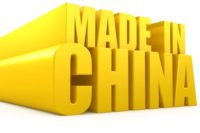 1) Consumer products and marketing continue to crossover to workplace safety. One of the new examples we see: Puma Safety Shoes. Timbaland is also here. And Skechers. And the surf culture clothing company Billabong. Many booth graphics use close-up portraits of gritty workingmen reminiscent of teens seen on American Apparel store windows. Performance sports are a theme: “Extreme gear for extreme conditions” says a glove company message matched to a mountain biker. Another booth has a skateboarded in flight.
1) Consumer products and marketing continue to crossover to workplace safety. One of the new examples we see: Puma Safety Shoes. Timbaland is also here. And Skechers. And the surf culture clothing company Billabong. Many booth graphics use close-up portraits of gritty workingmen reminiscent of teens seen on American Apparel store windows. Performance sports are a theme: “Extreme gear for extreme conditions” says a glove company message matched to a mountain biker. Another booth has a skateboarded in flight.
2) Data, data and more data is the “product” a number of vendors present. A Touch Track Data Collection tablet lets you “go green” and eliminate handwritten reports. Another product is a sort of Insta-Poll for conducting electronic employee perception surveys. And for major corporations, there are global enterprise compliance management and reporting solutions. SAP and Intelex and other management systems vendors are making waves in the safety world as advanced componentry has lowered the price of a small system to $10-$20,000, the CEO of one supplier tells us.
We’re reminded of a safety pro we met in a committee meeting on Sunday for the Institute for Safety and Health Management. The debate was over whether to send members printed annual membership cards via snail mail, or PDFs by email. “PDFs is all I want,” he said. “I am committed to going totally digital in my office, using no paper.”
3) A number of PPE companies tell us they are having good years (forget what the newspapers might tell you) with sales up anywhere from 10-25%. The reason: they have consolidated and bundled head to toe protection products, and made for one-stop shopping efficiency both for the safety distributor and the end-user buyer. One exhibitor here displays vending machines that dispense everything from hard hats to gloves, goggles, earplugs, and full-face respirators.
But get exhibitors off to the side at one of any number of evening receptions and they will also tell you they are cautious about 2012 forecasting, and they are growing either by being tethered to dynamic markets like oil and gas and food processing or by bashing competitors.
“You know, that’s the game now. We’re all trying to take business from each other. The pie ain’t getting bigger,” said a Denver-regional safety distributor who is very small (six people) and says he steals from large competitors “who should be better than they are” but are saddled with bureaucracies and less motivated field sales staff.




